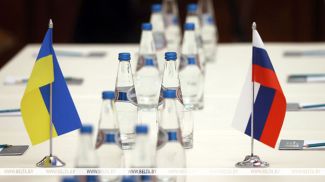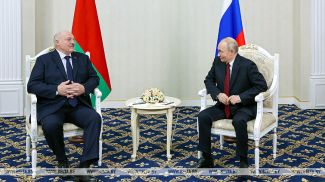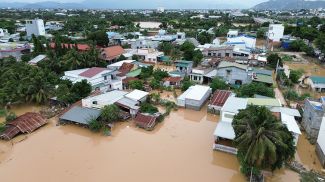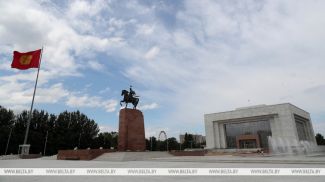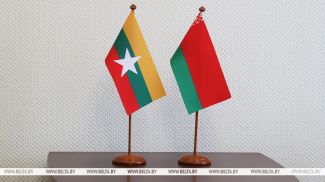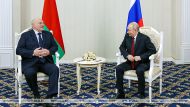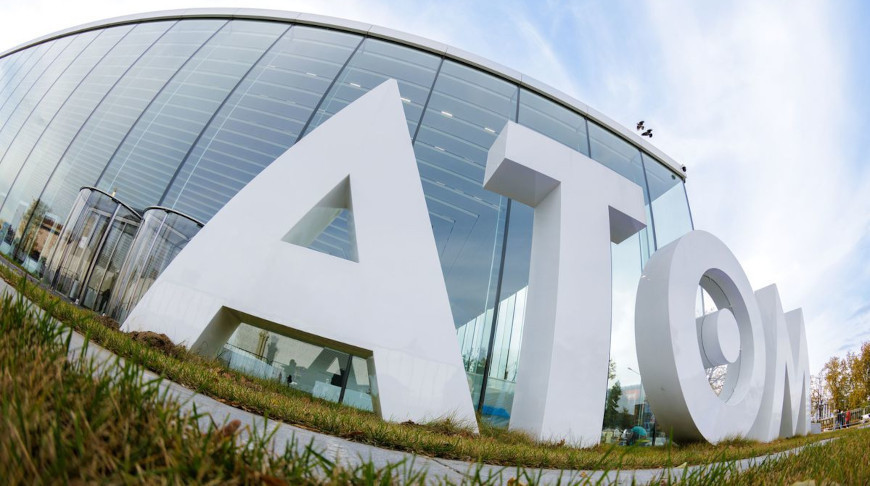
Belarusian President Aleksandr Lukashenko will take part in the international forum World Atomic Week in Moscow on 25 September. The forum is held under the slogan From a New Technological Paradigm to a New Worldview. Belarus is a full-fledged member of the elite ‘nuclear club’, which unites just over 30 states operating nuclear reactors for electricity generation. Despite a recent trend in a number of Western European countries to shut down nuclear power plants and move away from nuclear energy, the situation has now taken a turn in the opposite direction. Experts talk about a renaissance of peaceful nuclear energy. In this regard, Belarus, guided exclusively by its national economic interests rather than political fashion, has kept up with the trend. The Belarusian nuclear power plant in Ostrovets was commissioned during the current five-year period. It consists of two of the most modern and safest reactors of Russian design. The possibility of building another nuclear power plant or additional units at the existing site is also under serious consideration. Most importantly, Belarus has accumulated experience and competences in one of the most high-tech sectors. Therefore, at the Moscow forum Belarus will be able both to exchange insights and to present its own achievements.












The World Nuclear Week is held for the first time and is dedicated to the 80th anniversary of the Russian nuclear industry. The reference point is 20 August 1945, when a special committee was established to oversee the Soviet nuclear project, marking the starting point of the national nuclear sector. The industry was created with the joint efforts of scientists from across the Soviet Union, including Belarus.
The Atom Museum at VDNKh has been chosen as the venue for the forum. It houses Russia’s largest and most modern exposition dedicated to nuclear energy. The pavilion’s area is equivalent to three and a half football fields, with three underground and four above-ground floors. The exhibition traces the history of nuclear energy from the beginning of the Soviet nuclear project to the present day.
The Belarus pavilion is located nearby at VDNKh, housing trade and exhibition spaces. This also symbolically underscores our country’s closeness to the nuclear theme.

Who will be in attendance?
The nuclear forum will bring together representatives of more than 100 states, including CIS countries, Asia, Africa, and Latin America.The forum’s exhibition and business program will draw together renowned nuclear scientists, researchers, government officials, international organizations, and major companies.
Naturally, Russian President Vladimir Putin is expected at the forum. The distinguished guests, in addition to Aleksandr Lukashenko, will include Myanmar’s leader Min Aung Hlaing, Armenian Prime Minister Nikol Pashinyan, Ethiopian Prime Minister Abiy Ahmed, and IAEA Director General Rafael Grossi. The event will also be attended by representatives from Iran, Uzbekistan, Egypt, Niger, and a number of specialized organizations, the Kremlin press service reports.
A speech by the Belarusian president is expected. Representatives of relevant ministries and departments of the country will take part in the forum’s business program: roundtables, panel sessions, and open dialogues where prospects for the further development of the industry and its role in ensuring sustainable development of national economies will be discussed.
What will Belarus display at its stand?
Belarusian enterprises and organizations are also taking part in the World Nuclear Week. The collective stand of Belarus at the forum’s exhibition presents innovative projects in nuclear energy, industry, science, education, and nuclear medicine.
The project for the construction and commissioning of the Belarusian nuclear power plant is central at the exposition. Visitors can learn about the most significant results of the implementation of the national nuclear energy program, personnel training for the nuclear industry, measures to ensure nuclear and radiation safety, joint projects with the IAEA, and the development of Belarus’ cooperation with partner countries in nuclear energy.
What is unique about the BelNPP and what experience are Belarusian nuclear specialists ready to share?
The Belarusian nuclear power plant uses VVER-1200 Generation III+ reactors. It is a modern and advanced reactor of Russian make that meets the highest safety requirements. Belarus was the first foreign location where Rosatom had implemented this design. That is, the Ostrovets site has, in a sense, become a showcase for the advanced developments of the modern Russian nuclear industry.

Furthermore, the Belarusian NPP project has become the most high-tech and large-scale in the history of Belarusian-Russian relations. About 40 Belarusian and Russian organizations took part in the construction of the NPP. At the peak of the plant’s construction, over 9,000 workers were involved on site. The project united the scientific and engineering schools, dozens of enterprises, and thousands of specialists from the two countries.

Belarusian specialists gained unique experience not only during construction but also now in the operation and maintenance of the plant and its associated infrastructure. “This includes the integration of the Belarusian NPP into the country’s power system. This experience is now in demand and is being successfully applied at Rosatom projects abroad,” Belarusian Deputy Prime Minister Viktor Karankevich told reporters in Moscow. “We are not standing still. We believe there is a need to move forward in nuclear energy development. We can explain how our project was implemented, what experience and competences we gained.”
According to him, Belarus cooperates with partners in the EAEU, CIS, and other countries, such as Hungary, where Rosatom is also building a nuclear plant. “A working group of experts has been established to interact regularly and exchange experience in nuclear energy development,” Viktor Karankevich said.
“Many countries want to learn from our experience and get answers to specific questions on developing nuclear power,” Karankevich stressed.
What has the country gained from the nuclear project?
Belarus’ nuclear project did not emerge from nowhere. Back in the 1980s, construction began on a nuclear thermal power plant near Minsk under the USSR Energy Program of 1983. However, the Chernobyl nuclear tragedy led to the closure of the program, and a new gas-fired CHP plant was built instead.
It took years and political will for Belarus to return to nuclear energy development.
After long discussions and feasibility studies, the Security Council took a final political decision in early 2008 to build the Belarusian NPP.
“The construction of a nuclear power plant is a real prospect, a strategic goal, and Belarus will not abandon it. I think future generations will appreciate our decision,” the president said at the time.



The first unit of the Belarusian NPP was commissioned in June 2021, the second in November 2023.
Together they generate about 18 billion kWh annually, covering more than 40% of the country’s domestic electricity demand.
According to the Energy Ministry, at a time when other countries are only beginning to implement their nuclear programs, Belarus has already formed its own nuclear infrastructure. The NPP works for the economy and delivers tangible results. Key achievements include:
- Belarus has completely stopped importing electricity.
- Reliance on imported natural gas has been reduced, with more than 50 billion kWh generated since 3 November 2020 replacing over 13 billion cubic meters of natural gas.





- An environmental effect has been achieved, contributing to the common cause of mitigating climate change. Greenhouse gas emissions are cut by about 7 million tonnes annually.
- The NPP meets growing electricity demand for industry and households, including heating and hot water supply, supported by preferential tariffs for energy-intensive industries and households using electric heating.
- The plant has spurred the development of related industries and fostered innovative projects in industry, science, and medicine, creating new jobs and spreading advanced technologies.
An additional bonus of the plant’s construction was the development of the nuclear workers’ town of Ostrovets and Ostrovets District. Over the past decade, it has been transformed into a well-maintained, modern town withall the necessary conditions for comfortable living, such as schools, kindergartens, a hospital, a sports and recreation complex, and a cultural center, setting a golden standard for social development.
Will there be a second NPP in Belarus?
This remains under discussion, but, as Karl Marx said, the idea is increasingly taking hold of the masses. Judging by official statements, things are moving in that direction. It is only necessary to finally decide whether to build a new NPP on a new site or add one or two more units to the existing Belarusian NPP in Ostrovets.
The first option is more expensive, as it will require creating the entire infrastructure from scratch. But there are also advantages in terms of regional development and a shorter distance for delivering electricity to consumers in a specific region. It would also ensure more reliable power supply through the distribution of sources. Therefore, it is necessary to thoroughly calculate everything, weigh the pros and cons, preferably with a perspective of decades. It is possible that some statements on this matter will be made during the forum in Moscow.
Earlier, Aleksandr Lukashenko stated that a new NPP could be built in eastern Belarus. It is in the Mogilev Oblast that sites are located which were initially chosen, along with the Ostrovets site, as the most suitable for the construction of the Belarusian NPP.
“We have asked the Russians to build a second power plant, if possible. We will build it ourselves, except for the reactor. We have specialists,” Aleksandr Lukashenko said during an official visit to Russia in March 2025, addressing the Federation Council.

Regarding the location of this facility, the president suggested that it could be on the eastern borders: “If something happens... We can supply electricity to Bryansk Oblast and other areas, the new regions of Russia.”
Aleksandr Lukashenko spoke in the same vein during a meeting with residents of Kostyukovichi in April 2024. “The second site (the Krasnopolyanskaya site was previously identified as an alternative to the Ostrovets site where the Belarusian NPP was built) is located east of Mogilev. I am thinking today: if we build a second NPP, where will we place these reactors?” the president shared. “I am still inclined to believe that we have a station in the west. There should also be one in the east.”
As for Rosatom, there is readiness to continue cooperation. “We know the wishes of Aleksandr Grigoryevich[the Belarusian president] to continue construction. In any case, we are eager to do it. The question is only about the technical configuration and the location of the future unit,” Rosatom Director General Alexey Likhachev stated earlier.




